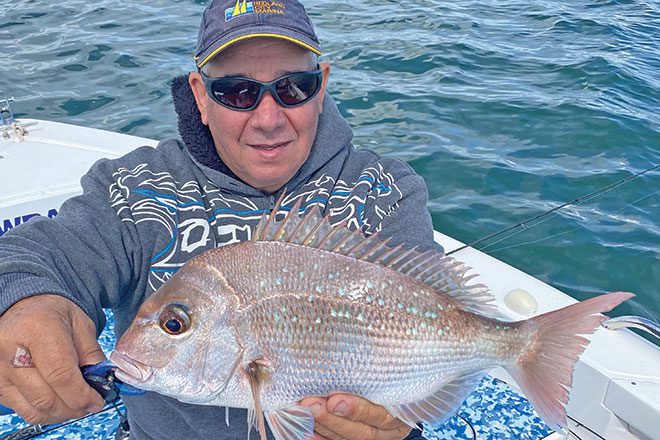When it comes to fishing, there is always a lot of talk about finding new ground and searching, and yes, it’s definitely a good thing to do.
Though something to not forget is the old ground as well.
What I mean by this is, ground you found by searching and have caught fish on at some point.
My advice, when you have found this ground, is to learn it very well – know when certain species turn up in that area and at what time of the year. Work out what tide fishes the best there and what sized tide delivers the best results.
This is super important as a lot of people want to know where that special covered in fish ‘Spot X’ is.
I always answer this question in the same way – if I had a special Spot X that was covered in fish and I’d caught fish off it for the past 14 years during my charters, it definitely wouldn’t be Spot X any more, as I’d have taken hundreds of people there.
What I do have are many spots and from each one of those, I’ve tried to learn all the ins and outs that help me to catch fish, and not only to catch fish off that area from one session – I need to know how to catch fish from that area multiple times a year and also year after year.
One of the best tricks is to take only a few fish from each area, so there’s always fish left.
If you take all the fish out of the spot, it takes a long time to replenish that area – something I’ve learnt over time.
Another learning is that, if you’ve caught fish in an area year after year, those fish will return to that area.
They may leave it for a certain number of months but usually return.
As an example, if you caught flathead in a certain area between May through to October but didn’t find any there in November December January, you’ll probably catch flathead in that same spot next May.
So, I try to remember these locations and when I get to those months, I quickly go to each area, have a quick fish and if the fish are there, happy days – and most of the time, they are.
To summarise, finding new ground is good, though learn your old spots thoroughly and add your new find to it.
Where this became apparent to me was on my last charter, before writing this article.
I’d had a few weeks away with the family and due to the weather, I hadn’t been out on the water for about four weeks.
For me, that’s a long time to be off the water, and as a result, let’s just say, you don’t have as good a handle on where the fish are hanging out.
So, we’ve got a customer, he has come out for the day expecting to get on to a few fish – how do I go about finding fish for him when I haven’t been out for a while?
Very simple – go to the areas I’ve caught fish before at that particular time of the year and check them out.
For me, this is easy because it’s my job, though it might be a good idea to keep a diary – in this type of situation, those records come in very handy.
I’ll pick the client up at 7am and we’ll head to our first spot.
 Bush 'n Beach Fishing Magazine Location reports & tips for fishing, boating, camping, kayaking, 4WDing in Queensland and Northern NSW
Bush 'n Beach Fishing Magazine Location reports & tips for fishing, boating, camping, kayaking, 4WDing in Queensland and Northern NSW








